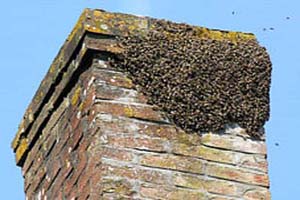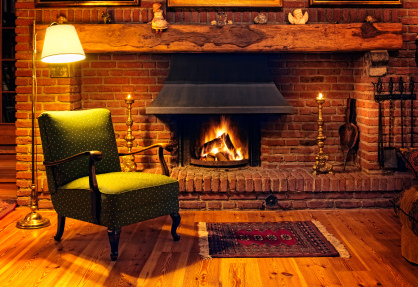How to Prevent Fireplace Smoke from Entering your House
April 2, 2014 in How to Prevent Fireplace Smoke from Entering your House

A
poorly drafting fireplace is
caused by improper air pressure
in your chimney which draws air
down instead of up the chimney
and out. As a result, when
you start a fire, the smoke
enters the room and makes a
mess. A drafting issue is
usually caused by one of these
problems: your chimney flue is
poorly insulated (cold hearth
syndrome), the chimney flue is
too large for the opening, the
chimney is too short, an
obstruction in the chimney is
interfering with drafting, you
are missing a chimney cap,
prevailing wind is overpowering
the chimney’s natural draft, or
maybe you simply forgot to open
the damper or it is only
partially opened.
The quickest solution and first thing you should check if you have smoke entering your house when you light a fire is if your damper is shut or only partially opened. Sometimes, people shut the damper to retain heat in the room and forget to reopen it when starting a new fire. If the damper assemblies are covered in creosote or corroded, then the door may not open far enough to allow smoke to exit in which case, the damper will need to be replaced.
If
you have a drafting issue you
can consider getting a top
sealing damper that can be
mounted at the top of the
chimney. The top sealing damper
opens and closes creating an
air-tight seal, unlike a
traditional chimney cap which
does not close. A lot of
times, people want to know the
difference between the top
sealing damper and the chimney
cap. While they both keep
critters and rain out, the extra
benefit of the top sealing
damper is that you can close it
to retain heat and therefore,
save money!
If
your flue is too large for the
fireplace opening, then you may
have smoke absorbed into your
house. The surface area of the
fireplace opening must at least
be ten times greater than the
surface area of the chimney flue
opening to handle smoke
properly.
If
your chimney is too short, you
can fix this by adding an
extension to the top of your
chimney. Your chimney
should be at least ten to twelve
feet tall to allow for proper
drafting, especially if your
chimney is located on the
exterior of your house where
cold air can keep the interior
temperature of your chimney
colder. A natural draft
requires the hot air to rise and
works better in a well-insulated
chimney flue. This is known as
cold hearth syndrome, when the
cold condensed air inside the
chimney prevents the hot air and
smoke from the fire to rise.
If you have cold hearth
syndrome, you need to find a way
to isolate the cold outside air
from the chimney airflow and the
top sealing damper mentioned
earlier is a great solution.
A
tight-fitting fire screen can
also work to prevent the vacuum
effect causing smoke to direct
back into the house.
Another piece of equipment we
recommend is a smoke guard,
which you can read more about in
our DIY equipment section.
Because there are many reasons and solutions behind a drafting problem, it is best to start out with those solutions that are simpler such as checking the damper, fire screen, or inserting a smoke guard or chimney cap first. If those are still unsuccessful, then consider construction such as extending your flue with the help of a professional chimney sweep.



